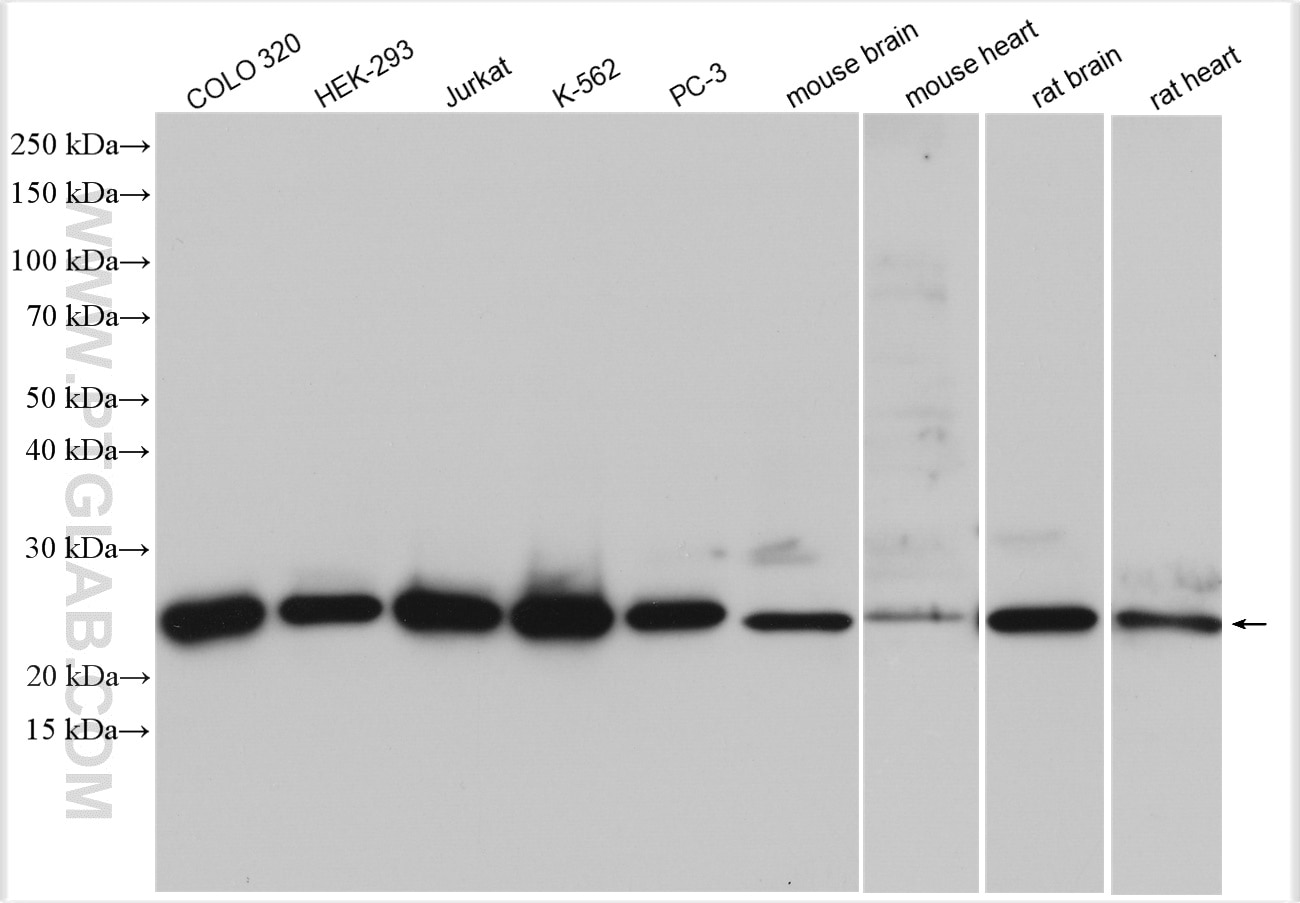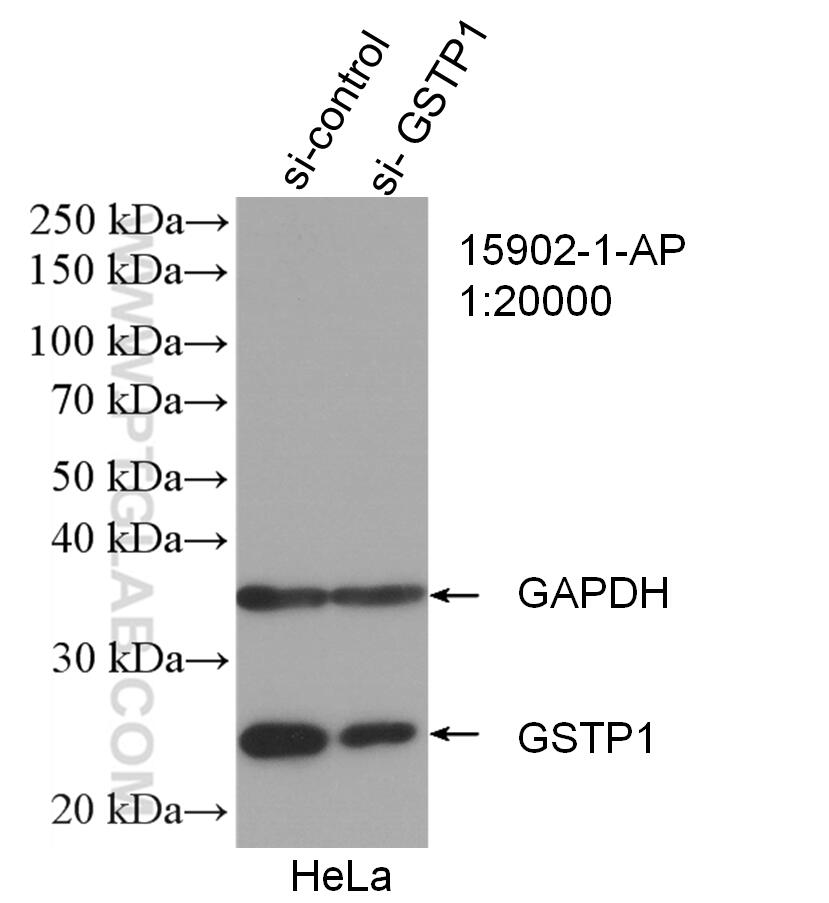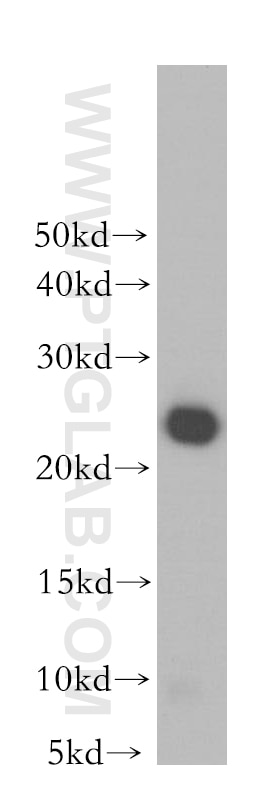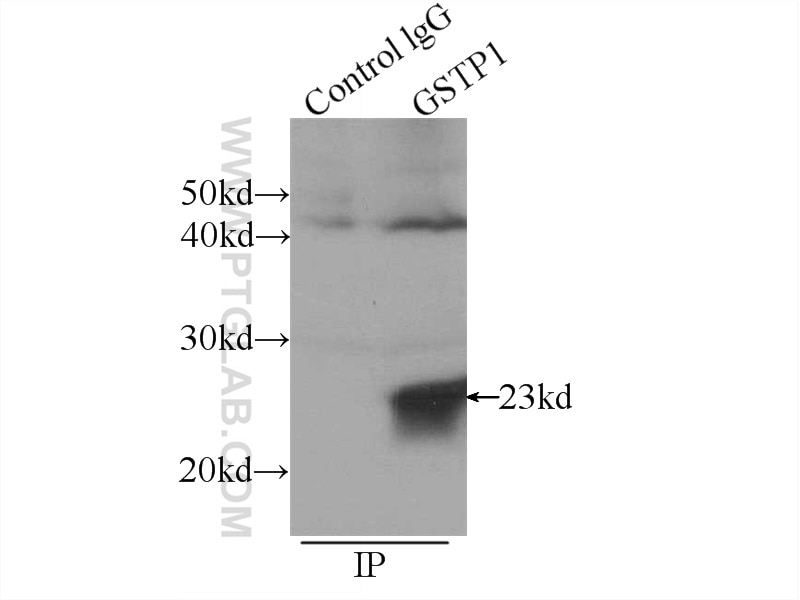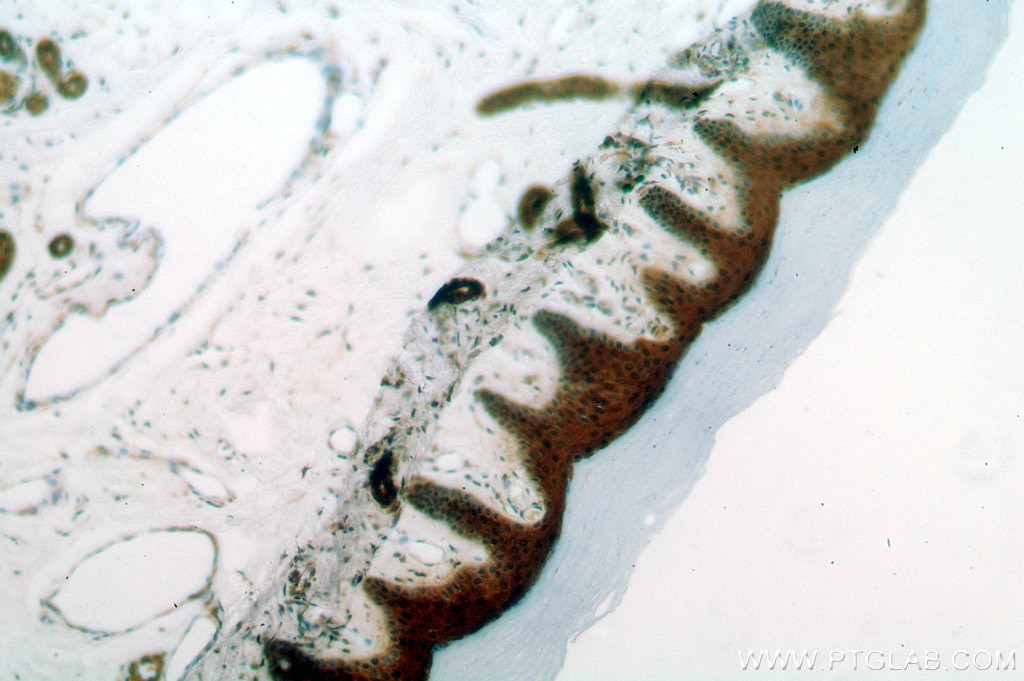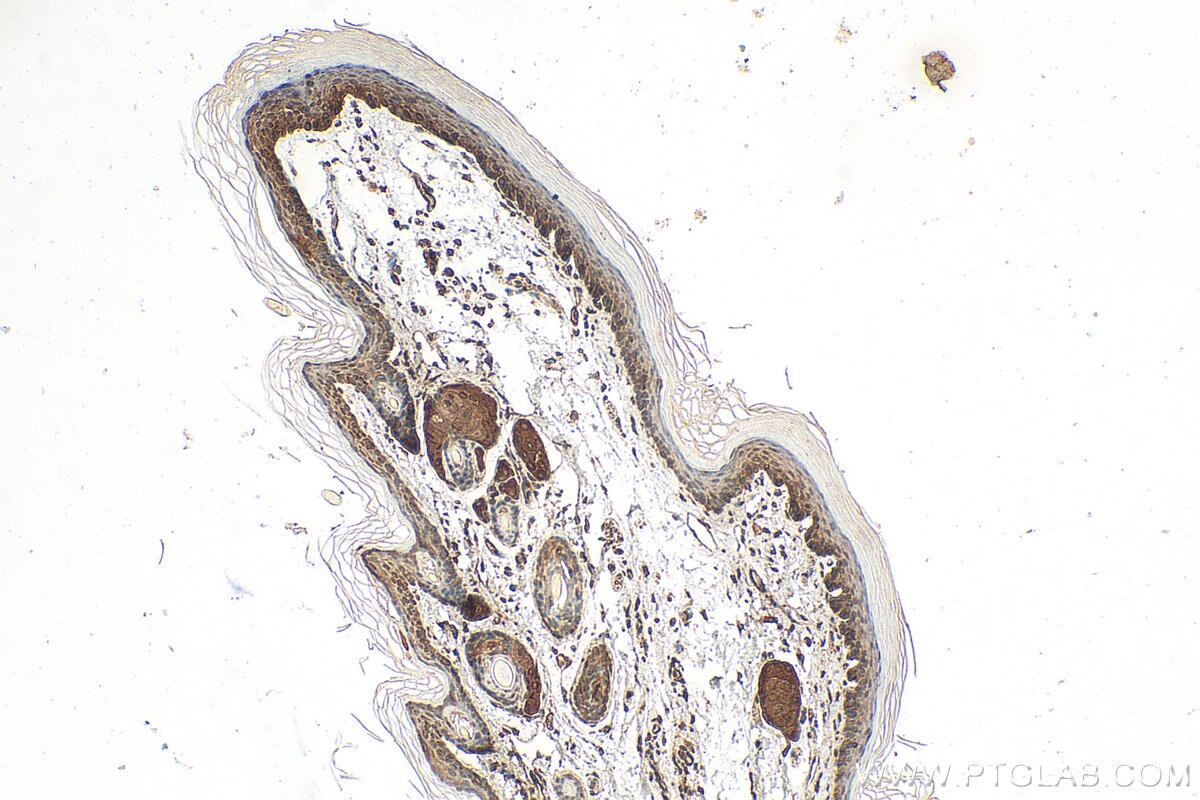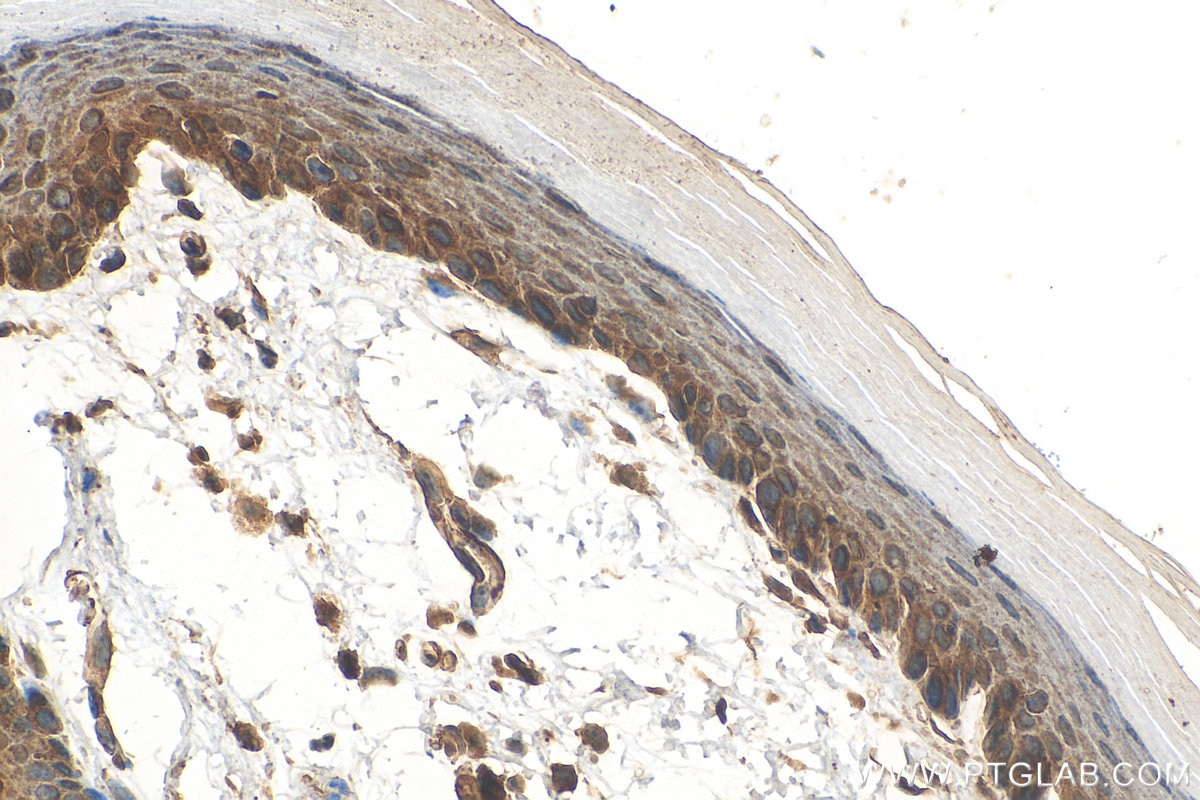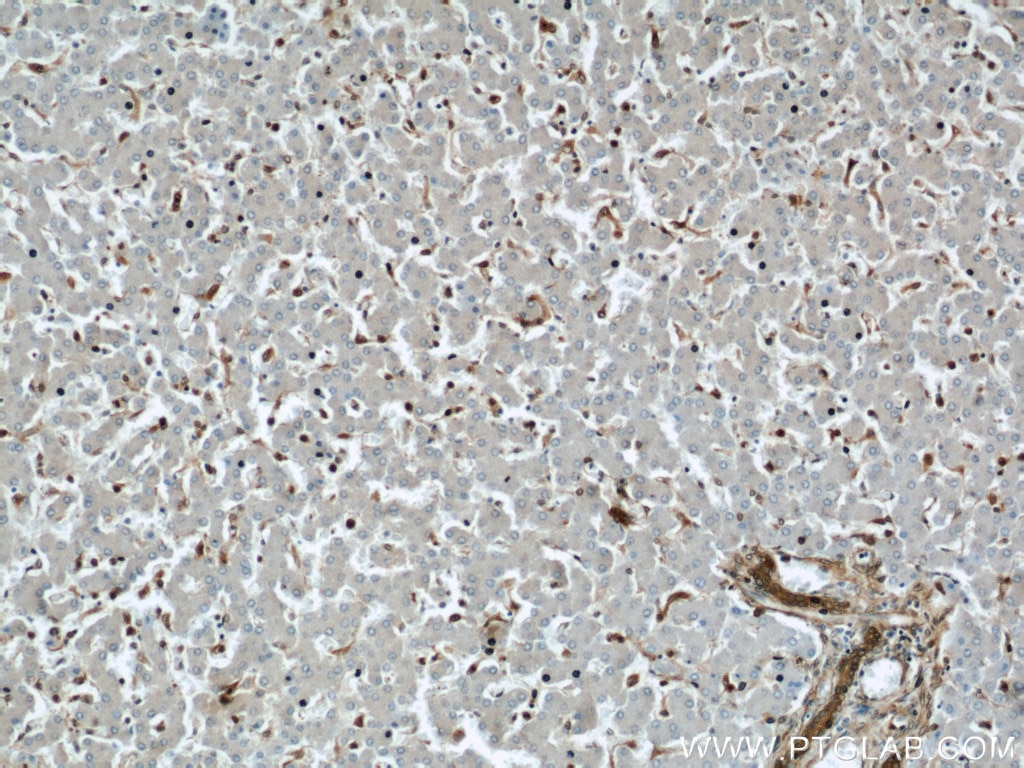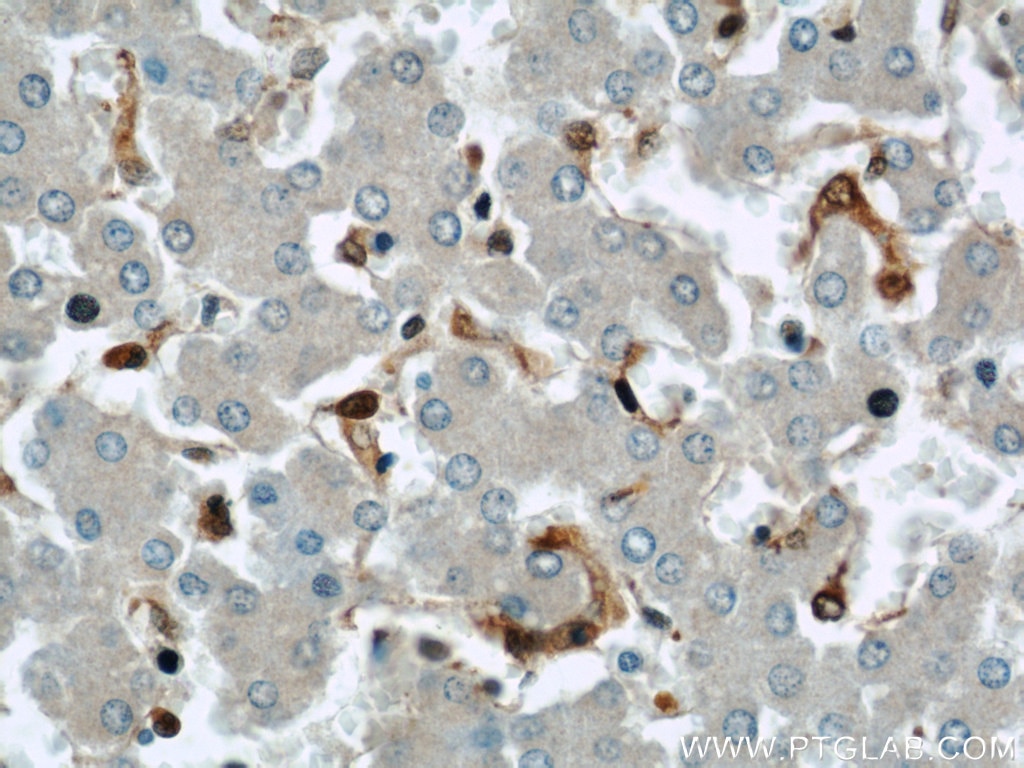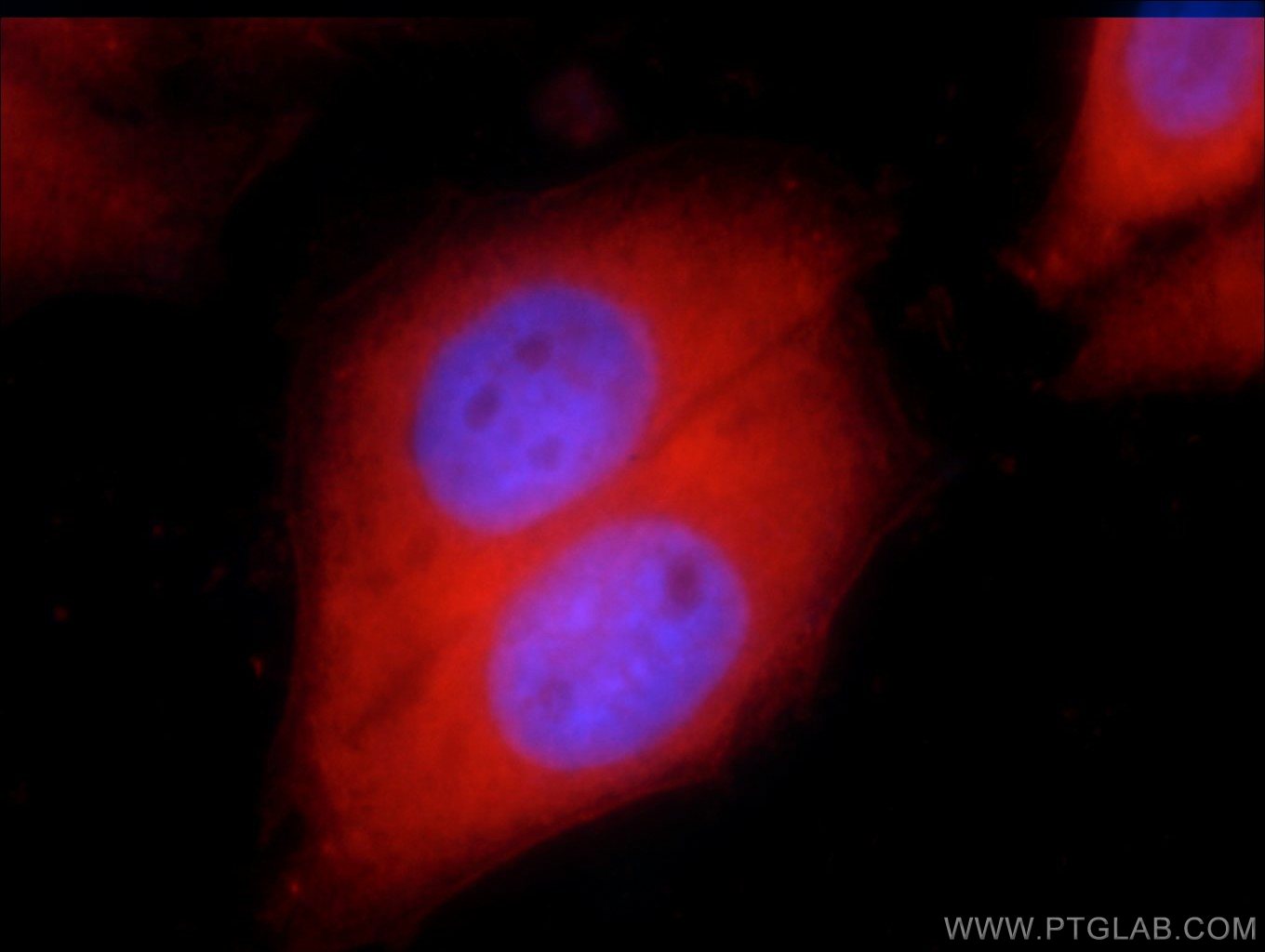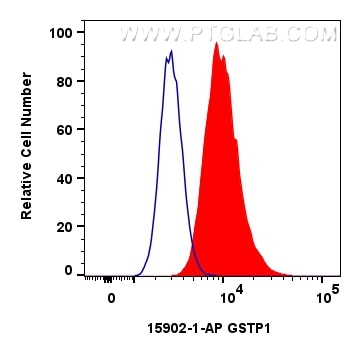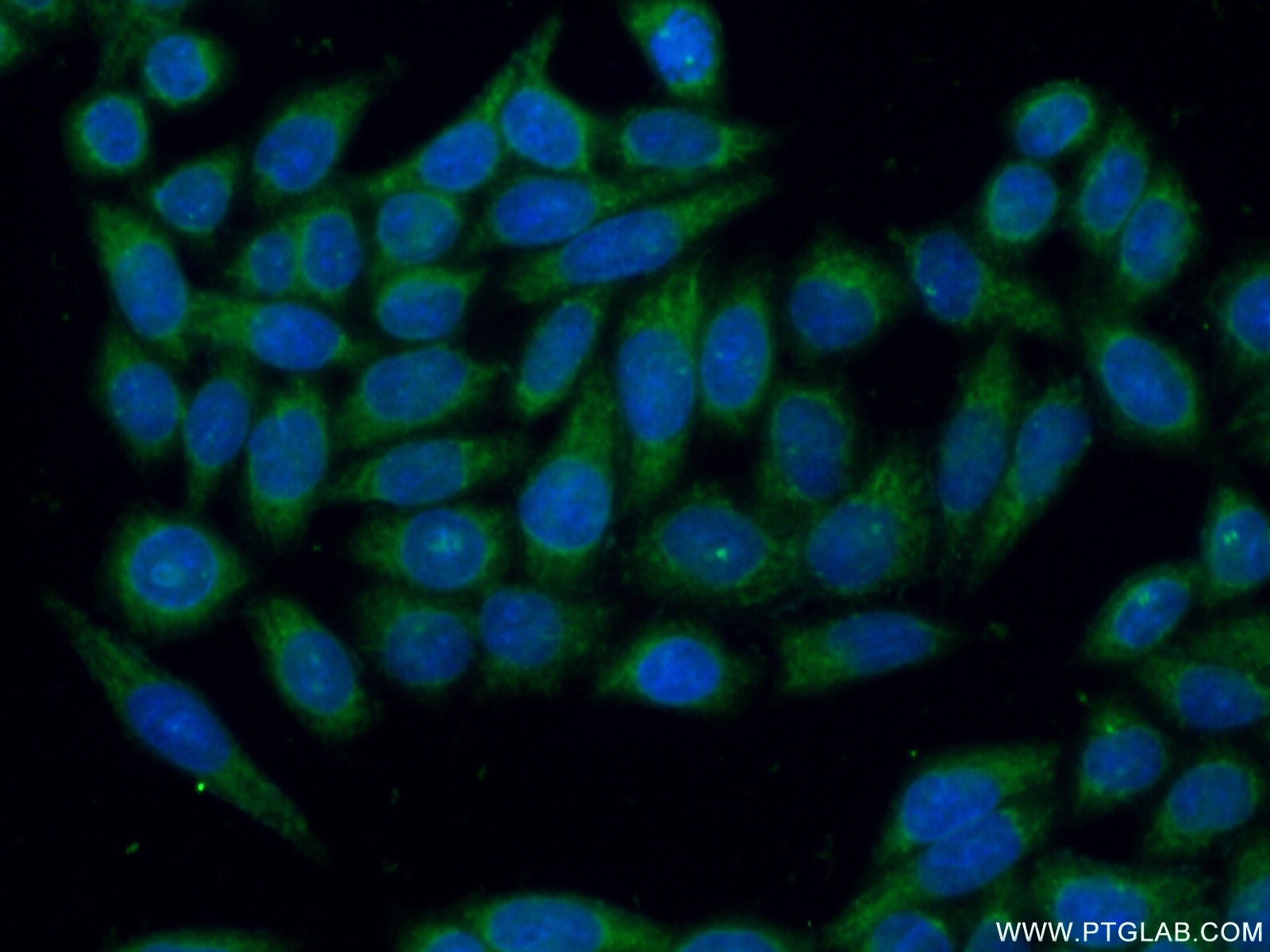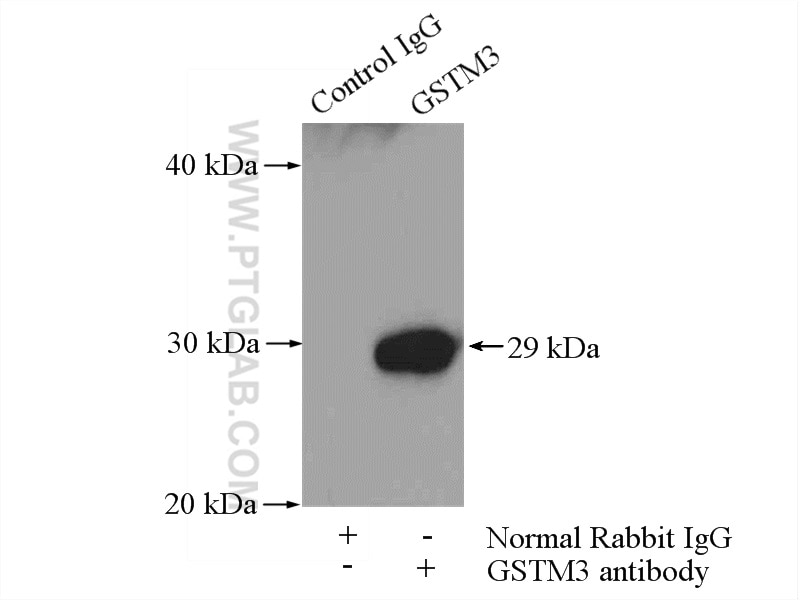- Phare
- Validé par KD/KO
Anticorps Polyclonal de lapin anti-GSTP1
GSTP1 Polyclonal Antibody for WB, IP, IF, IHC, ELISA, FC (Intra)
Hôte / Isotype
Lapin / IgG
Réactivité testée
Humain, rat, souris
Applications
WB, IHC, IF/ICC, FC (Intra), IP, CoIP, ELISA
Conjugaison
Non conjugué
N° de cat : 15902-1-AP
Synonymes
Galerie de données de validation
Applications testées
| Résultats positifs en WB | cellules COLO 320, cellules HEK-293, cellules HeLa, cellules Jurkat, cellules K-562, cellules PC-3, tissu cardiaque de rat, tissu cardiaque de souris, tissu cérébral de rat, tissu cérébral de souris, tissu cérébral humain |
| Résultats positifs en IP | tissu cérébral de souris |
| Résultats positifs en IHC | tissu cutané de souris, tissu cutané humain, tissu hépatique humain il est suggéré de démasquer l'antigène avec un tampon de TE buffer pH 9.0; (*) À défaut, 'le démasquage de l'antigène peut être 'effectué avec un tampon citrate pH 6,0. |
| Résultats positifs en IF/ICC | cellules HepG2 |
| Résultats positifs en FC (Intra) | cellules HepG2 |
| Résultats positifs en cytométrie | cellules HepG2 |
Dilution recommandée
| Application | Dilution |
|---|---|
| Western Blot (WB) | WB : 1:2000-1:16000 |
| Immunoprécipitation (IP) | IP : 0.5-4.0 ug for 1.0-3.0 mg of total protein lysate |
| Immunohistochimie (IHC) | IHC : 1:50-1:500 |
| Immunofluorescence (IF)/ICC | IF/ICC : 1:20-1:200 |
| Flow Cytometry (FC) (INTRA) | FC (INTRA) : 0.40 ug per 10^6 cells in a 100 µl suspension |
| Flow Cytometry (FC) | FC : 0.40 ug per 10^6 cells in a 100 µl suspension |
| It is recommended that this reagent should be titrated in each testing system to obtain optimal results. | |
| Sample-dependent, check data in validation data gallery | |
Applications publiées
| KD/KO | See 2 publications below |
| WB | See 25 publications below |
| IHC | See 6 publications below |
| IF | See 6 publications below |
| IP | See 1 publications below |
| CoIP | See 1 publications below |
Informations sur le produit
15902-1-AP cible GSTP1 dans les applications de WB, IHC, IF/ICC, FC (Intra), IP, CoIP, ELISA et montre une réactivité avec des échantillons Humain, rat, souris
| Réactivité | Humain, rat, souris |
| Réactivité citée | rat, Humain, souris |
| Hôte / Isotype | Lapin / IgG |
| Clonalité | Polyclonal |
| Type | Anticorps |
| Immunogène | GSTP1 Protéine recombinante Ag8731 |
| Nom complet | glutathione S-transferase pi 1 |
| Masse moléculaire calculée | 210 aa, 23 kDa |
| Poids moléculaire observé | 23-28 kDa |
| Numéro d’acquisition GenBank | BC010915 |
| Symbole du gène | GSTP1 |
| Identification du gène (NCBI) | 2950 |
| Conjugaison | Non conjugué |
| Forme | Liquide |
| Méthode de purification | Purification par affinité contre l'antigène |
| Tampon de stockage | PBS avec azoture de sodium à 0,02 % et glycérol à 50 % pH 7,3 |
| Conditions de stockage | Stocker à -20°C. Stable pendant un an après l'expédition. L'aliquotage n'est pas nécessaire pour le stockage à -20oC Les 20ul contiennent 0,1% de BSA. |
Informations générales
Glutathione S-transferase P (GSTP1) conjugates reduced glutathione to a wide number of exogenous and endogenous hydrophobic electrophiles. It is involved in the formation of glutathione conjugates of both prostaglandin A2 (PGA2) and prostaglandin J2 (PGJ2) (PubMed:9084911). Participates in the formation of novel hepoxilin regioisomers (PubMed:21046276).
Protocole
| Product Specific Protocols | |
|---|---|
| WB protocol for GSTP1 antibody 15902-1-AP | Download protocol |
| IHC protocol for GSTP1 antibody 15902-1-AP | Download protocol |
| IF protocol for GSTP1 antibody 15902-1-AP | Download protocol |
| IP protocol for GSTP1 antibody 15902-1-AP | Download protocol |
| Standard Protocols | |
|---|---|
| Click here to view our Standard Protocols |
Publications
| Species | Application | Title |
|---|---|---|
Mol Cell SMURF2 predisposes cancer cell toward ferroptosis in GPX4-independent manners by promoting GSTP1 degradation
| ||
Redox Biol GSTP1-mediated S-glutathionylation of Pik3r1 is a redox hub that inhibits osteoclastogenesis through regulating autophagic flux
| ||
J Cell Biol TDP-43 mediates SREBF2-regulated gene expression required for oligodendrocyte myelination. | ||
Part Fibre Toxicol Protein target identification and toxicological mechanism investigation of silver nanoparticles-induced hepatotoxicity by integrating proteomic and metallomic strategies. | ||
Cell Death Dis Poly(ADP-ribosyl)ated PXR is a critical regulator of acetaminophen-induced hepatotoxicity. | ||
Oncotarget Prognostic significance of GSTP1 in patients with triple negative breast cancer. |
Avis
The reviews below have been submitted by verified Proteintech customers who received an incentive forproviding their feedback.
FH James (Verified Customer) (11-30-2022) | Works pretty well.
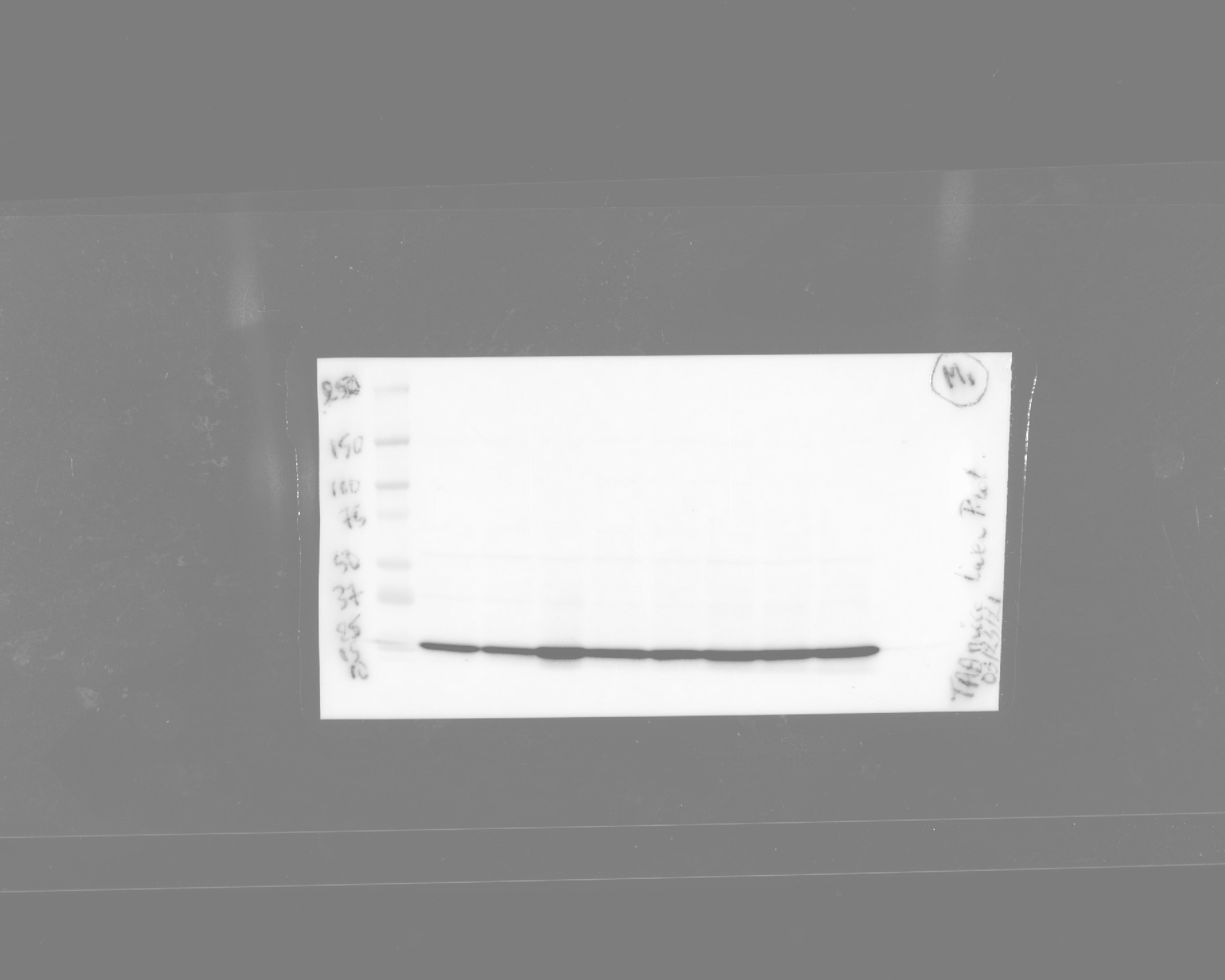 |
